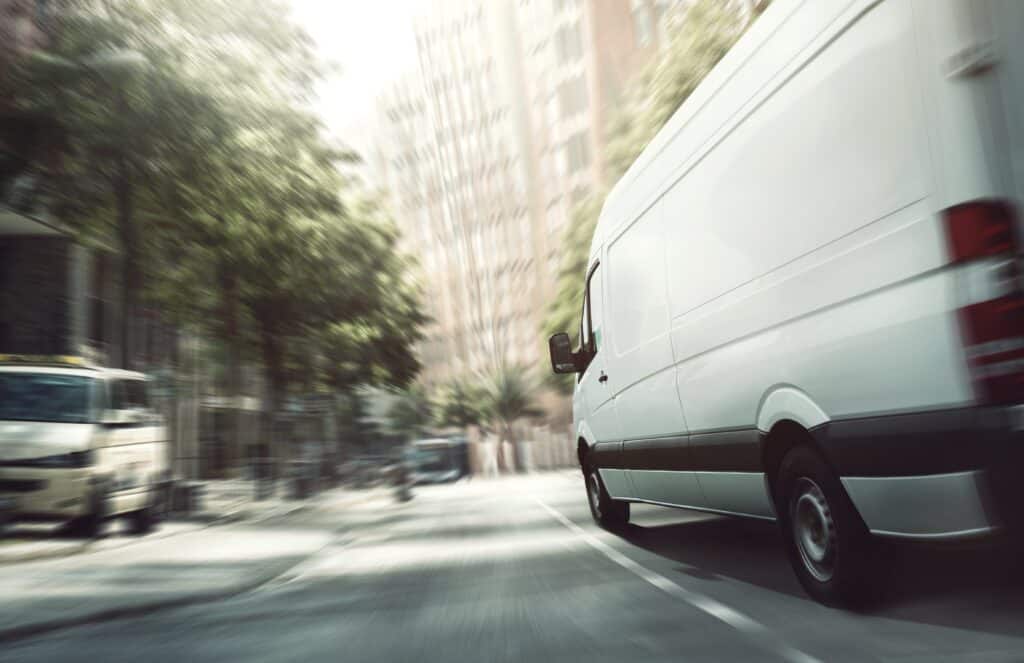How Fast is Last-Mile Delivery? Here’s How You Can Accelerate It

Wise Systems

Just how fast is last-mile delivery? That ultimately depends on the delivery carrier and the type of delivery. For instance, food deliveries can happen within minutes, but a product ordered from a warehouse may not be delivered for a few days. Either way, the primary goal is efficiency.
How Fast Is Last-Mile Delivery?
Last-mile delivery is designed to be quick. However, the speed of last-mile delivery depends on many factors. In addition to the last-mile delivery carrier, the type of delivery vehicle, the size and nature of a package, and the distance between a distribution center and the customer’s home are a few of the factors that influence last-mile delivery speed.
Today, many last-mile delivery operators strive to deliver packages to their final destination within 1 to 2 business days, although it’s not uncommon for last-mile deliveries to take several days or as long as 10 business days.
The key is increasing the speed of last-mile delivery while also ensuring accuracy. Not only can quick last-mile delivery satisfy customers, but it can also decrease costs associated with shipping for businesses.
In this guide, we’ll discuss the following topics regarding the speed of last-mile delivery services:
- 4 Strategies to Speed Up Last-Mile Delivery Time
- Optimize Vehicle Routing
- Offer Alternative Delivery Options
- Use Real-Time Delivery Tracking
- Give Drivers the Tools They Need to Succeed
- Reduce Last-Mile Delivery Time to Boost Customer Satisfaction
- Frequently Asked Questions
4 Strategies to Speed Up Last-Mile Delivery Time

Last-mile delivery optimization relies on several factors, including technology uptime, routing efficiency, and planning. Businesses and last-mile operators can take the following steps to avoid bottlenecks and improve last-mile delivery speeds.
1. Optimize Vehicle Routing
Optimized vehicle routing may be the most crucial piece of last-mile delivery fleet management. With an optimized routing system, fleets can increase their efficiency by filling vehicles to capacity and completing more deliveries in a shorter amount of time.
The best way to plan and manage vehicle routing? Route planning software. This type of software simplifies route planning by detecting the most straightforward and efficient routes for a fleet, analyzing when changes should be made, and quickly adjusting when necessary.
With automated planning based on real-time traffic, weather, and other data, delivery personnel can stay on track and accelerate their deliveries.
2. Offer Alternative Delivery Options
When it comes to deliveries, businesses should consider ways to allow customers to receive their packages in the way that makes the most sense for them.
Deliveries to a home or office aren’t always the most convenient or secure options. Alternative delivery options, such as having a package stored at a secure location and picking it up on the way back from work, might be preferable.
When alternative solutions are used, delivery personnel can still complete deliveries quickly, but in a way that blends speed and convenience for customers. Secure storage lockers and local pickup spots create additional delivery points that improve last-mile efficiency for drivers and customers.

3. Use Real-Time Delivery Tracking and Dispatching
Last-mile delivery software is for more than route planning. The right software can also track deliveries so that dispatchers can pivot and adjust deliveries when needed. The dispatch team can flag and handle any problems in the delivery process in real time.
Real-time tracking also allows drivers and fleet managers to visualize routes and stops and view potential delays as soon as they happen. Then, operators can notify customers of unforeseen delays.
4. Give Drivers the Tools They Need to Succeed
A driver that’s well-equipped to navigate their deliveries can be more efficient on the road, reducing last-mile delivery time. Fleet managers should consider equipping their driving team with a mobile app that visualizes delivery routes, navigates between deliveries, and provides detailed delivery instructions from customers or dispatchers.
The best last-mile apps for drivers also provide ETAs, allow drivers to record digital proofs of delivery, and help drivers see their overall performance for continued improvement.
Reduce Last-Mile Delivery Time to Boost Customer Satisfaction
A rapidly expanding fleet can hinder last-mile delivery speed if your company isn’t using effective planning strategies.
Having the right last-mile delivery system in place can help your fleet run more efficiently and effectively, which, in turn, will keep customers happy.
The Wise Systems delivery automation platform offers last-mile delivery solutions to help fleet managers, dispatchers, and drivers optimize and accelerate the delivery process.
Get started by learning more about real world results, or request a demo to see the platform in action for yourself.
Frequently Asked Questions
How long does last-mile delivery take?
Last-mile delivery time can vary significantly based on the type of delivery, the location, and the service used. Generally, last-mile delivery should occur within 1 to 2 days, but some deliveries may take just a few minutes, while others may take several business days.
What is the average last-mile delivery distance?
Populated cities like Dallas and New York City tend to have the shortest last-mile delivery distances, usually about 6-7 miles on average. However, deliveries in these areas aren’t necessarily faster, as operators are faced with other challenges, such as traffic congestion. Meanwhile, areas with less sophisticated infrastructure tend to have last-mile delivery distances of 10 miles or more.
How can I reduce my last-mile delivery time?
Reduce last-mile delivery times by implementing fleet management software that tracks deliveries, plans routes, and helps drivers navigate their daily routes. Offering alternative delivery options, like partnered pickup locations or storage hubs, can also improve efficiency.

